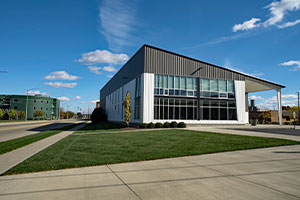
8780 Sherry Drive
Orangevale, CA. 95662
916-784-1149
Orangevale, CA has nearby treatment options including: 0 medicare program, 4 inpatient treatment centers, 3 drug rehabs that take private insurance like Aetna, 4 drug detox, 0 outpatient treatment program.

For help finding an addiction treatment center, Call us!
All calls are 100% confidential and free
1-877-882-9275




CS II LLC is 1.7 miles from Orangevale, CA
CS II LLC is a drug and alcohol rehab center for individuals residing in Orangevale and within the surrounding neighborhoods and struggling with a drug and alcohol use disorder . It provides services like brief intervention approach, substance abuse counseling approach, cognitive/behavior therapy, anger management, activity therapy, rational emotive behavioral therapy and more, that are in keeping with its philosophy of evidence based treatments that are proven effective.
In the same way, CS II LLC believes in individual treatment to make sure that their patients achieve the best possible results. The substance abuse treatment facility has also specialized in other treatments like persons who have experienced sexual abuse, child care for clients children, persons with post-traumatic stress disorder, persons with serious mental illness, legal advocacy, clients with HIV/AIDS - among many others. All these services are also offered by CS II LLC in a variety of settings like short term rehab facilities, long term rehab centers, outpatient individual counseling, inpatient treatment programs, inpatient detoxification centers, as well as others.
Further, it has aftercare planning designed to help you achieve permanent and lasting sobriety. These programs have ensured that CS II LLC has a special place within the Orangevale, California area, especially because they lead to both positive short and long term outcomes for the people who enroll into this addiction treatment facility. Lastly, CS II LLC accepts cash or self-payment, private insurance, payment assistance, sliding fee scale, state welfare or child and family services funds, state education funds and others.



Bella Nirvana Center Inc is 2.9 miles from Orangevale, California
Bella Nirvana Center Inc is an addiction treatment center for individuals living in Orangevale, California and its surrounding areas while battling a drug and alcohol abuse disorder and co-occurring mental health disorder. It offers services like brief intervention approach, substance abuse counseling approach, cognitive/behavior therapy, anger management, activity therapy, rational emotive behavioral therapy and more, that are in line with its philosophy of the treatments that have been proved to work.
In the same way, Bella Nirvana Center Inc believes in individualized care to ensure that their patients achieve the best possible results. The alcohol and drug rehab program has also specialized in other types of care like persons who have experienced sexual abuse, child care for clients children, persons with post-traumatic stress disorder, persons with serious mental illness, legal advocacy, clients with HIV/AIDS - among many others. All these services are also provided by Bella Nirvana Center Inc in a variety of settings like short term drug rehab facilities, long term drug rehab facilities, outpatient day treatment, inpatient treatment programs, detoxification programs, as well as others.
In addition, it has aftercare programs and other treatment methods created to help you achieve permanent and lasting sobriety. These services have ensured that Bella Nirvana Center Inc has a special place within Orangevale, California and its surrounding area, especially because they promote both positive short and long term outcomes for the clients who enroll into this drug and alcohol rehab. Lastly, Bella Nirvana Center Inc accepts private pay, private medical insurance, payment assistance, sliding fee scale, state welfare or child and family services funds, state education funds and others.
Fentanyl is a powerful synthetic opioid analgesic that has garnered significant attention in recent years due to its role in the opioid crisis. Here are some essential facts about fentanyl:
Potency: Fentanyl is estimated to be 50 to 100 times more potent than morphine and 25 to 50 times more potent than heroin. Due to its high potency, it is prescribed in micrograms (mcg) rather than the milligrams (mg) typically used for other opioids.
Medical use: Fentanyl is primarily used in medical settings to manage severe pain, such as chronic pain or breakthrough pain in cancer patients. It is also used as an anesthetic during surgical procedures. Fentanyl is available in various forms, including transdermal patches, lozenges, tablets, and injections.
Illicit use: Fentanyl has become a significant concern in the illicit drug market due to its potency and relatively low production cost. Illegal fentanyl is often mixed with other drugs, such as heroin, cocaine, or counterfeit prescription pills, increasing the risk of overdose for unsuspecting users.
Overdose risk: Fentanyl's potency makes it particularly dangerous, as even a small amount can cause an overdose. Signs of fentanyl overdose include slow or shallow breathing, unresponsiveness, pinpoint pupils, cold and clammy skin, and loss of consciousness. Fentanyl overdoses can be fatal if not promptly treated.
Naloxone: Naloxone, also known as Narcan, is an opioid antagonist that can rapidly reverse the effects of a fentanyl overdose by displacing the drug from the opioid receptors in the brain. Due to fentanyl's potency, multiple doses of naloxone may be necessary to reverse an overdose effectively.
Fentanyl analogs: There are numerous fentanyl analogs or derivatives, such as carfentanil, acetylfentanyl, and furanylfentanyl. These analogs can have varying potencies, often significantly stronger than fentanyl itself, which can further increase the risk of overdose and fatalities.
Legal classification: Fentanyl is a Schedule II controlled substance in the United States, indicating that it has a high potential for abuse and dependence but also has accepted medical uses. Illicit fentanyl and its analogs are often classified as Schedule I substances, indicating that they have no accepted medical use and a high potential for abuse.
Addiction and dependence: Fentanyl, like other opioids, carries a risk of addiction and physical dependence. Chronic use can lead to tolerance, requiring higher doses to achieve the same effect, and withdrawal symptoms if usage is reduced or stopped abruptly.
An intervention for someone with a drug addiction is a structured and planned event designed to encourage the individual to acknowledge their addiction and seek professional help. The primary goal is to guide the person towards accepting treatment and taking the necessary steps towards recovery. Here is an outline of what typically happens during an intervention:
Fentanyl is a synthetic opioid that is 50 to 100 times more potent than morphine. It is used medically to treat severe pain, but its potent nature also makes it dangerous when misused or taken in excessive amounts. When a person overdoses on fentanyl, several life-threatening symptoms and complications can occur:
If you suspect someone is experiencing a fentanyl overdose, it is crucial to call emergency medical services immediately. Administering naloxone, an opioid antagonist, can temporarily reverse the effects of the overdose, but multiple doses may be needed due to fentanyl's potency. It is essential to note that naloxone is not a substitute for professional medical care, and the person must still receive prompt medical attention to address any underlying complications and ensure proper treatment.
National Non Profit Helpline - 1-877-882-9275
Our National Non Profit Helpline is a 24/7, 365-day-a-year treatment referral and information service for individuals and families faced with mental and/or substance use disorders.
All calls are strictly confidential
Our service provides referrals to licensed treatment facilities, support groups, and community-based organizations. You don't have to struggle alone with addiction. Help is just a phone call away. Call 1-877-882-9275 now to get the help you need and deserve.
© Copyright 1998 - 2022 All Rights Reserved. Content is protected under copyright laws, do not use content without written permission.